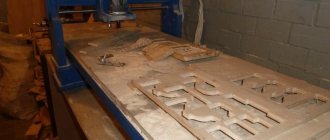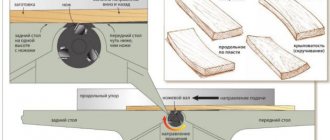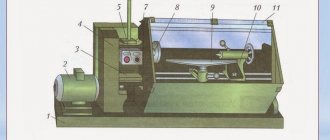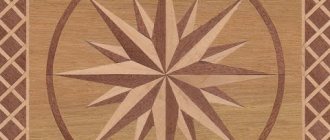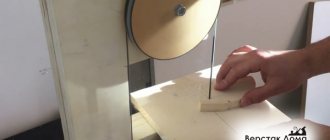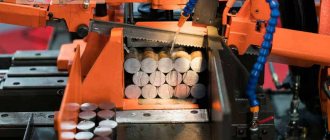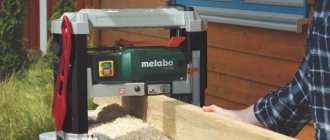Band saw design
Band saws are a special continuous design, which is characterized by the presence of cutting elements on one side. This is a cutting element with which woodwork is performed. The most common uses of band saws are in a variety of band saw blades. With their help, cutting of various parts is carried out. With the help of these blades, a fairly high quality of cut is ensured. All this is ensured only if the saw has a good alignment. The tool also needs to be serviced promptly.
Band saw sharpening machine
Band saws are made from heavy-duty metal, which ensures not only high quality cuts, but also long service life of the saw. The teeth have a universal angle, which allows for the highest quality cutting of material.
Characteristics
Band saws have three distinctive features. They are made only from special grades of tool steel, which ensures high strength and wear resistance of the teeth. Russian manufacturers usually use steel categories 9ХФ and В2Ф, foreign companies prefer the C75 series. In any case, the hardness of the material must be at least 45 HRS.
The cutting width of a band saw blade is much narrower than that of its circular saw counterparts. As mentioned above, this is a fundamental factor when processing valuable wood and industrial wood.
Saws can easily handle workpieces of any length and diameter. At the same time, a properly sharpened band saw ensures high production productivity.
It should be clarified that the reliability of closed saws is explained by the heterogeneity of the material used to make the blade.
In particular, the body of the sawing tool is usually made of spring steel, which has incredible resistance to tension and dynamic loads. The cutting edge is made from steel grades with a high content of tungsten and cobalt. The individual parts of the fabric are welded together by high-frequency currents. Tools made using this technology can be used for sawing metal.
Shapes of the cutting part and sharpening angle of the blades
The geometry of the cutting elements of band saws can be varied, which directly depends on the material that is intended for sawing. Woodworking machines are most often equipped with special saws that can be used to:
- carpentry work;
- sawing logs and beams;
- use on dividing saws.
The sharpening angle is determined strictly by the tool manufacturer. The sharpening angle will be as small as possible when using hard wood. Band saws for metal are equipped with saws with different blade shapes, which directly depends on the metal used for sawing. If it is necessary to cut thin-walled metals and at the same time have thin chips, the rake angle of the cut when sawing will be equal to zero, then standard cutting is used. The sharpening angle can be varied. It directly depends on the structure of the device.
Tooth profiles
A tooth that has a positive rake angle is found in those saws that are widely used for sawing thick-walled metal. The blade pitch used to cut thin metal is quite small. In order to cut thick-walled metal, it is necessary to use devices that have a large number of blades. In some cases, the equipment has a variable pitch, which eliminates the effect of resonance. The change in the distance between the teeth directly depends on a specific group.
Types of saws
Band saws can be distinguished by the type of teeth, taking into account the configuration of which the required sample is selected for processing a certain type of material. The selection of the configuration of the saw teeth is based on the characteristics of the lumber, in particular, on the parameters of its hardness: the denser the wood, the smaller the rake angle of the blade cutters and the pitch between them .
By following this rule, it is possible to significantly improve the quality of the cut and extend the service life of the tool.
Cutting thin materials is usually carried out using a saw blade that has a standard or small pitch between the cutters, otherwise the risk of damage to the working tool increases many times over. A saw with a large pitch of teeth is designed to use it to cut thick-walled metal or wood workpieces that must be firmly fixed before starting the processing process.
Setting out the cutting elements of the band saw
A spread is the bending of band saw blades in different directions. This can significantly reduce the friction of the blade and prevent it from jamming. To ensure free movement of the blade on the walls of the material being cut, its width must be greater than the thickness of this material.
Types of Band Saw Wiring
Divorce can have several varieties. It may have different names from different manufacturers. Most often it may be:
- Standard, which is characterized by opposite bending of the cutting elements in various directions. It is most often used for band saws that cut hard materials.
- Wavy, which belongs to the category of complex structures. Divorce in this case has a variable meaning. In this case, a kind of wave is formed.
Wiring device
Device for wiring Taiga
The unraveling consists in bending not the entire canvas, but only a certain part of its top. The parameters are determined strictly by the tool manufacturers. Their range is from 0.3 to 0.7 millimeters.
Protective. Setting consists of bending two teeth. At the same time, the third one remains in place. Intended for band saws for processing particularly hard materials. Every third tooth is shaped like a trapezoid. The location is the center of the canvas. With its help, the most correct direction of the saw blade is ensured.
Woodworking machines are characterized by the universal design of the sawing tool. The spreader for processing soft rocks must be larger in size than in equipment for processing hard rocks. But the spread should not be such that there is a wedge in the center without a cutout. The spread must be characterized by the same arrangement of all cutting elements. The teeth must be set so that the deviation is no more than 0.1 millimeters. If the saws are unevenly positioned, this will cause the band saw equipment to move to the side during operation.
Operating rules
If you decide to sharpen a band saw at home without resorting to the services of a specialist, read the rules for performing this procedure.
To properly sharpen a band saw, you will need a special sharpening machine and the instructions below. The configuration of the grinding wheel, which can be flat, profiled, disc-shaped or bowl-shaped, is selected depending on the technical characteristics of the saw. Please note that strict adherence to safety rules will protect you from injury and the tool from damage. To protect the respiratory tract from the characteristic heavy dust, work must be carried out in a respirator or a special mask. So, let's move on to the step-by-step execution of work .
- When starting to sharpen a band saw, be sure to check the grinding wheel for uneven abrasion and all sorts of defects, the presence of which will not allow you to remove an even layer of metal and will lead to undesirable consequences in the form of damage to the cutter.
- A dull tool should be sharpened without jerking or abruptly moving the tool along the surface of the abrasive wheel, otherwise the structure and height of the teeth will be damaged.
- The third rule rather concerns the mechanism of the grinding wheel, which must contain a coolant that prevents the unit from overheating. This option will protect the sharpening machine from failure and will help to accurately sharpen the saw blade.
- Upon completion of the work, you must carefully inspect the surface of the saw and make sure that there are no snags or chips on it. If such defects are detected, the saw must be sharpened on the wheel again, bringing it to the machine at a certain angle, or brought to the required parameters on a grinding machine.
Turning methods
Sharpening of band saws for wood is carried out in two ways: on professional equipment (full-profile) or by sharpening the edges of the cutters. In the first case, we are talking about the most accurate machine version of sharpening, during which the entire process is carried out using automation. In order to sharpen the tool properly, it will be enough to select the main element of the machine - the CBN wheel; everything else is controlled by the electronics. The cost of such work is quite high, and it is unlikely to be suitable for those who often face the need to sharpen saws due to their intensive use, unless, of course, the master does not own such a machine. It is worth noting the fact that purchasing a set of abrasive wheels for all types of band saws also requires additional costs, and for one-time manipulations there is no point in purchasing it.
The second method involves exclusively sharpening the teeth, and can be performed either manually or automatically using a special device. Proper manual sharpening requires an engraver and certain skills of the person who works with it . In order not to spoil the metal and avoid damage to the teeth, the master’s movements must be accurate and fast enough. When starting such procedures for the first time, it is advisable to carry out a test sharpening on an unnecessary sheet of metal in order to avoid damage to the expensive tool.
Proper sharpening of band saw blades involves processing the back and front edges of the cutters, although most craftsmen who perform this process by hand limit themselves exclusively to sharpening the rear edges. This method will allow you to use the tool for its intended purpose, and it is much easier to implement than double-sided sharpening. The sharpening of the leading edges can be carried out correctly if you have a sharpening machine . Here, as in the case of full-profile sharpening, it is necessary to select the correct size of the grinding wheel, and then the cutting band will acquire the necessary sharpness. There is a winter method for sharpening a tape, in which the sharpening angle is 90 degrees, and instead of water, coolant or diesel fuel is poured into the machine.
Wiring
Unfortunately, standard sharpening is sometimes not enough to return the saw to the required degree of sharpness, an important condition of which is the amount of bending of the cutters, called in professional language the setting. The essence of this condition is that at the moment of sawing, when the tool comes into contact with the lumber, the friction force is reduced, and the material can move freely between the teeth of the blade.
In most cases, a standard setting is used, during which the incisors are alternately extended in different directions relative to each other at a distance not exceeding 0.4 mm. It is quite possible to set up the saw at home, but it is necessary to exercise strict control over the angle of deflection of the cutting elements - it must be the same.
There is also protective wiring, which is used mainly in professional workshops. With this procedure, two incisors must be bent at different angles, while the third tooth remains untouched. No less complex is the wavy layout, and its essence is fully reflected in the name. In this case, the teeth delicately bend in one direction and tightly close together, and the tape takes on a wavy configuration. In the video you can see how band saws are wired at home.
